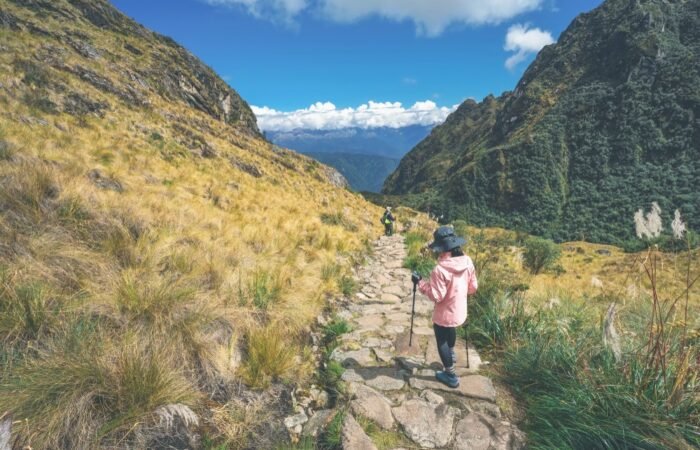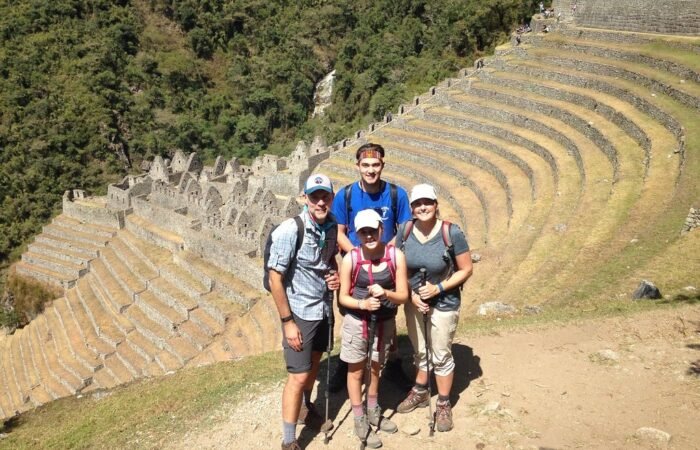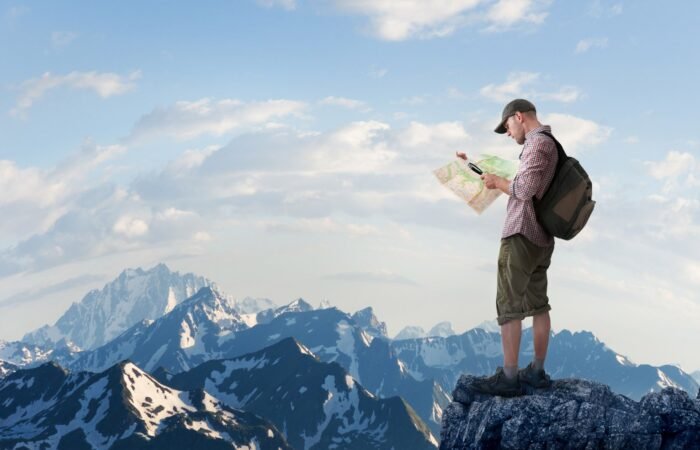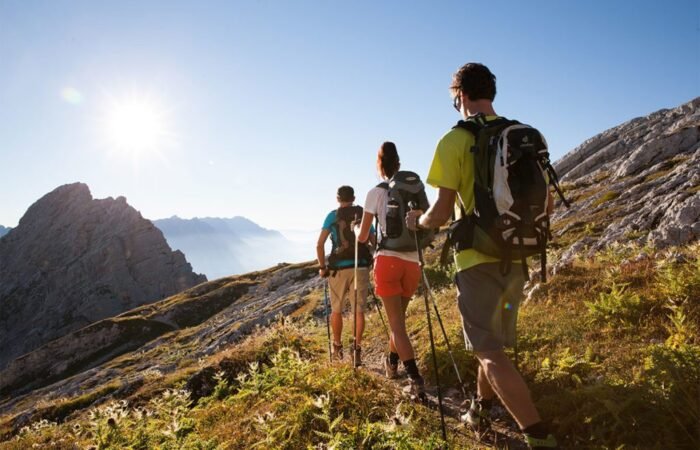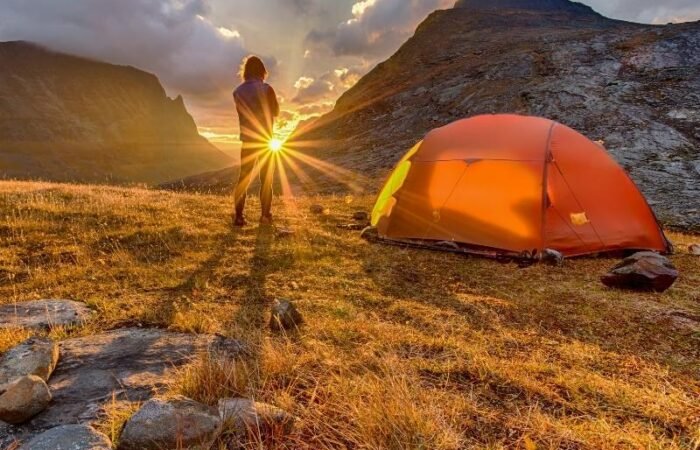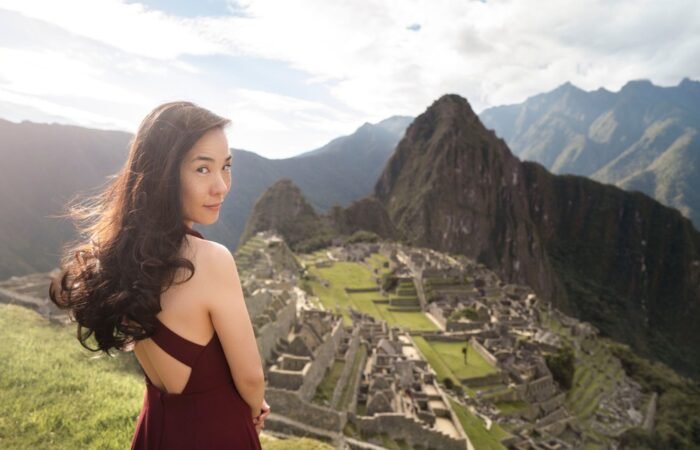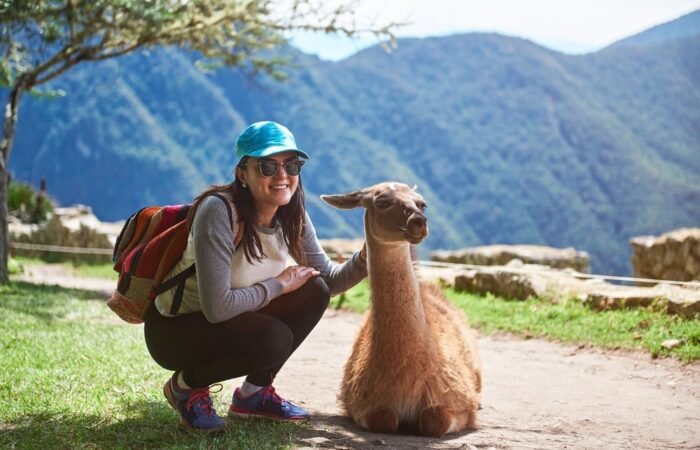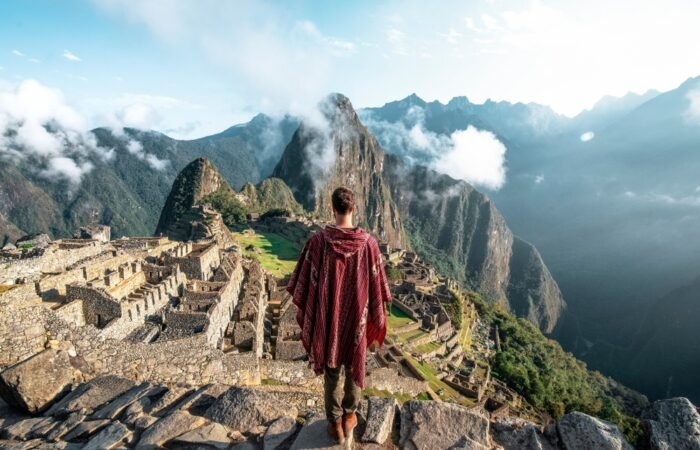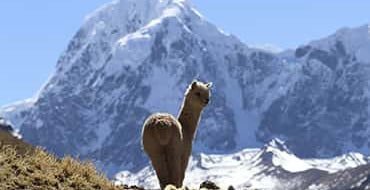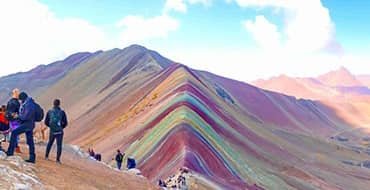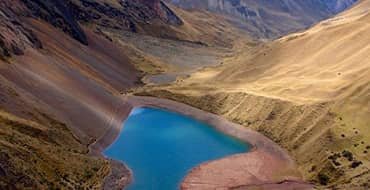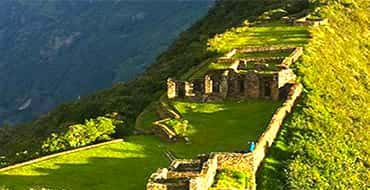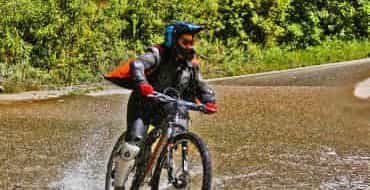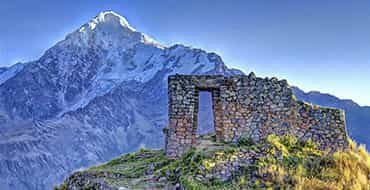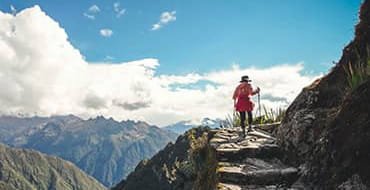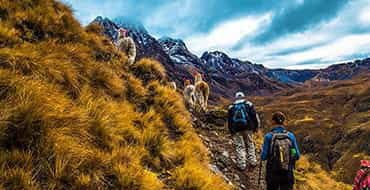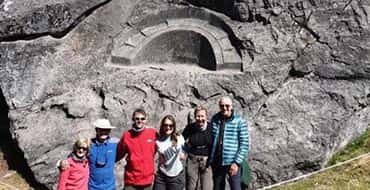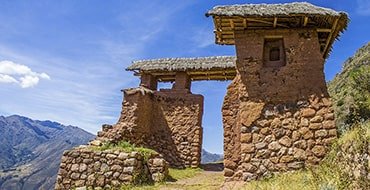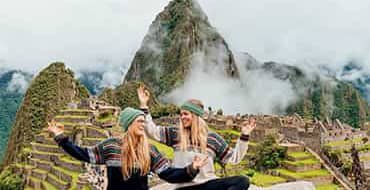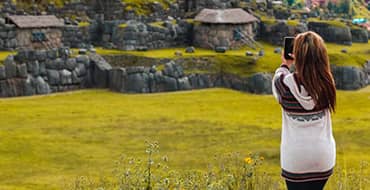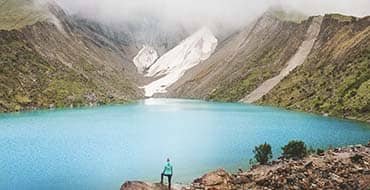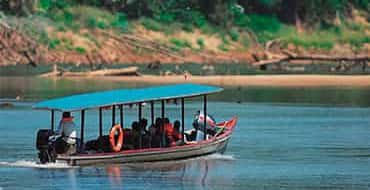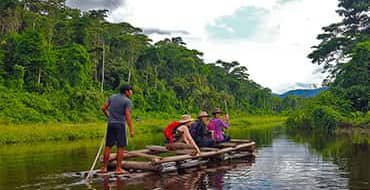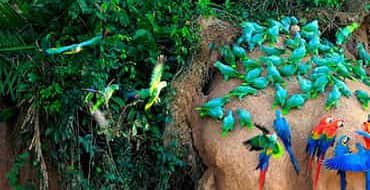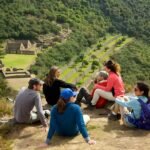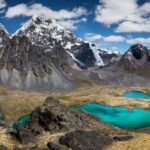

The Magic of Machu Picchu
Machu Picchu, often referred to as the “Lost City of the Incas,” is a monumental expression of the rich cultural heritage and architectural brilliance of the Incan civilization. Designated as a UNESCO World Heritage Site in 1983, it stands as a testament to the ingenuity of its builders, merging seamlessly with the stunning mountainous landscape of Peru. This iconic site, perched high in the Andes, attracts countless visitors each year, all eager to delve into its historical significance and breathtaking views.
Embarking on a journey from Cusco to Machu Picchu is not just about reaching a destination; it is an adventure steeped in history and natural beauty. The route showcases the rich tapestry of Peruvian culture, weaving through vibrant markets, ancient ruins, and breathtaking terrain. As travelers set off from Cusco, they will encounter the stunning Andean landscapes, each step echoing the footsteps of those who came long before. The vibrant scenery, adorned with lush valleys and towering peaks, creates an unforgettable backdrop for the journey ahead.
Moreover, the trip offers immersive cultural experiences that enhance the connection to the land and its people. Travelers can engage with local traditions, sample regional delicacies, and learn about the significant role of the Incas in shaping Peru’s history. The allure of adventure is palpable, whether through hiking scenic trails, exploring quaint villages, or learning about the archaeological wonders that dot the landscape. Throughout the following guide, readers will be equipped with insights into the daily experiences awaiting them on this remarkable journey from Cusco to the awe-inspiring Machu Picchu.


Day 1: Arrival in Cusco
Arriving in Cusco, one of the most historically rich cities in Peru, marks the beginning of an enriching experience as you prepare for your journey to Machu Picchu. Situated at an altitude of approximately 3,400 meters (11,200 feet), acclimatization is crucial for visitors, as the high altitude can significantly affect those unaccustomed to it. It is advisable to take it slow on the first day, allowing your body time to adjust to the elevation. This could involve light activities such as sipping on coca tea, known for its properties that help alleviate altitude sickness.
Once you feel ready to explore, begin your visit at the Plaza de Armas, Cusco’s main square, which reflects the blend of Incan and colonial architecture. This vibrant area is not only the center of social life in Cusco but also surrounded by various cafes and shops where you can immerse yourself in local culture. Nearby, the Qorikancha, or Temple of the Sun, stands as a testament to Cusco’s Incan heritage. Although much of the original structure was destroyed during the Spanish conquest, the remaining walls still showcase the impressive stone construction techniques that characterize Incan architecture.
When it comes to dining, Cusco offers a wide range of culinary experiences. From local eateries serving traditional Peruvian dishes such as ceviche and lomo saltado to upscale restaurants, visitors can savor authentic flavors. For accommodations, numerous options cater to a variety of budgets, including charming boutique hotels and comfortable hostels. Ensure your first night is restful; a good night’s sleep will aid in your acclimatization, setting a positive tone for the days ahead on your journey to the iconic Machu Picchu.

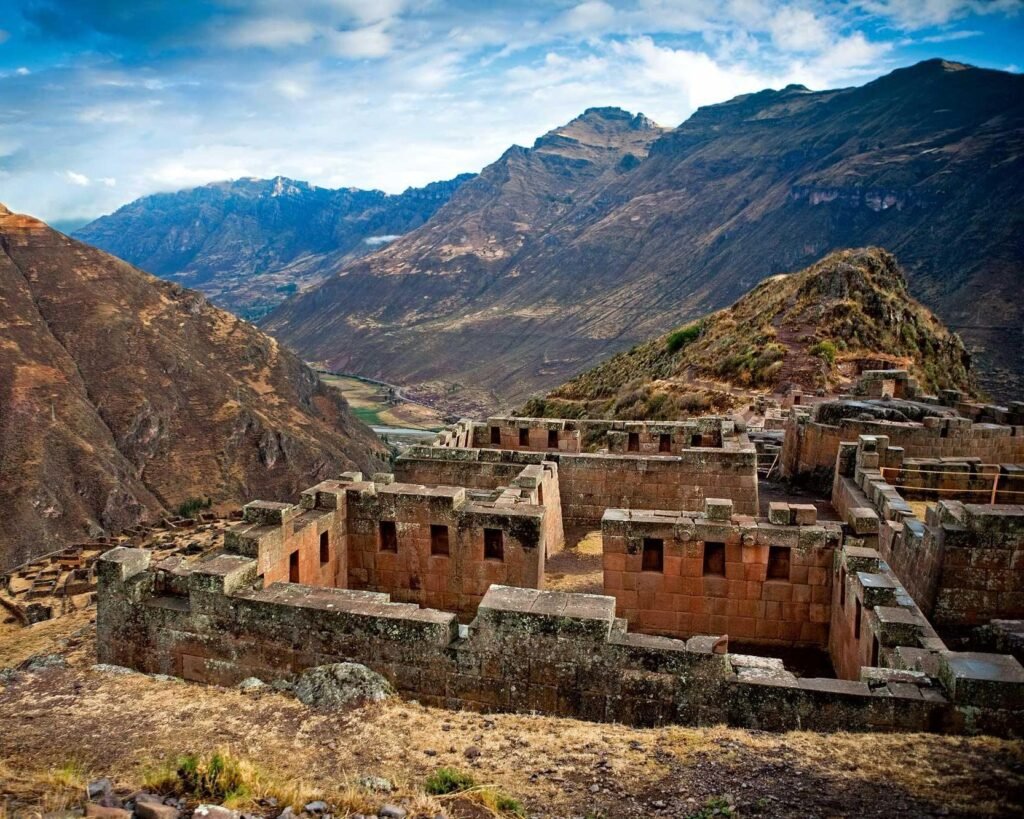
Day 2: Discovering Sacred Valley
On the second day of your journey from Cusco to Machu Picchu, you will delve into the stunning Sacred Valley, an area of rich cultural heritage and breathtaking landscapes. The Sacred Valley, or Urubamba Valley, played a crucial role in the life of the Incas, serving as an agricultural hub that supported the larger civilization. This region not only connects Machu Picchu to Cusco but also embodies the enduring legacy of Inca history.
Your day will commence with a visit to the village of Pisac, where you can explore its vibrant local market. This market is renowned for its array of handicrafts, textiles, and fresh produce, offering an authentic glimpse into traditional Peruvian life. Engaging with local artisans and purchasing unique souvenirs contributes to the region’s economy and preserves its cultural identity. Following the market visit, a short hike will lead you to the impressive Pisac archaeological site, perched on a hillside. Here, you will marvel at the well-preserved terraces and ancient structures that illustrate the ingenuity of Incan engineering.
Continuing your journey, you will head to Ollantaytambo, a town that showcases traditional Incan town planning. The Ollantaytambo Fortress is a highlight, featuring massive stone terraces and temples that served as military and religious sites. This location provides an extraordinary view of the valley, allowing you to appreciate its inherent beauty. After exploring the ruins, enjoy a meal at one of the local restaurants, where you can savor traditional Peruvian dishes. Cuisine such as ceviche or lomo saltado offers a delicious insight into the cultural melding of influences that shape Peruvian gastronomy.
The Sacred Valley is not merely a backdrop to Machu Picchu; it is an integral part of understanding the Incas’ connection to the landscape and their agricultural practices. By immersing yourself in these experiences, you enrich your overall knowledge of this ancient civilization.


Day 3: Train Journey to Aguas Calientes
The journey from Ollantaytambo to Aguas Calientes is a pivotal experience in any trip to Machu Picchu, marked by stunning scenery and a unique mode of travel. After leaving Ollantaytambo, travelers can expect an enchanting ride aboard the train, with options such as the Vistadome, which offers panoramic views through large windows. This service elevates the experience by allowing passengers to immerse themselves in the landscape of the Sacred Valley.
As the train departs, be prepared to witness the transformation of the scenery. Initially, you will see fields dotted with traditional villages and the majestic Andean mountains standing guard over the landscape. As you progress along the Urubamba River, the lush vegetation and steep hillsides begin to drape around you, creating a sense of seclusion that enhances the magical atmosphere. Photographers should keep their cameras ready as breathtaking views unfold with every twist and turn of the railway.
To ensure a smooth travel experience, it is essential to purchase train tickets in advance. The main operators for this route are PeruRail and Inca Rail, both offering various service levels. It is advisable to review schedules and book your preferred option online or through a local travel agency. The Vistadome service, in particular, provides not only comfort but also benefits elusive to more standard train services, such as live cultural presentations and local cuisine offerings.
Upon arrival in Aguas Calientes, the town serves as the gateway to Machu Picchu. Visitors can take a moment to explore the quaint streets filled with shops and restaurants, perhaps indulging in a warm meal or a hot springs experience, which the town is famous for. As the day winds down, ensure you prepare for the adventure that awaits at Machu Picchu, which is typically best explored early in the morning. The excitement of reaching the ancient citadel begins with this beautiful train journey to Aguas Calientes.

Day 4: Exploring Machu Picchu
On the fourth day of your journey, the highlight is undoubtedly the mystical site of Machu Picchu. To make the most of your expedition, it is crucial to familiarize yourself with the entrance procedures and the overall layout of the archaeological site. There are several ticket options available, including general admission, which grants access to the ruins, and add-ons for hiking Huayna Picchu or Machu Picchu Mountain. It is advisable to pre-book your tickets online to ensure you secure a spot, especially during peak tourist seasons.
Timing your visit is equally significant. The best times to explore Machu Picchu are either early in the morning or late afternoon, as these hours often provide less crowded conditions and stunning lighting for photography. Arriving at dawn allows visitors the opportunity to witness the site shrouded in mist, creating an ethereal atmosphere—perfect for capturing the essence of this ancient Incan sanctuary.
While navigating Machu Picchu, plan your route to ensure you experience the site’s must-see structures. The Temple of the Sun, the Intihuatana stone, and the residential zones are essential highlights. For those looking to elevate their experience, hiking Huayna Picchu rewards adventurers with panoramic views of the ruins below. This trail is considered moderately challenging and is limited to a certain number of hikers per day, making reservations vital. Alternatively, Machu Picchu Mountain offers a less trafficked path and equally breathtaking vistas, catering to those keen on experiencing a more tranquil hike.
In conclusion, exploring Machu Picchu is a once-in-a-lifetime experience that requires thoughtful planning. By understanding the entrance processes, timing your visit, and choosing the right hiking route, you can immerse yourself in the rich history and unparalleled beauty of this remarkable site, ensuring your adventure leaves a lasting impression.


Day 5: Aguas Calientes Adventures
After an exhilarating exploration of Machu Picchu, Day 5 in Aguas Calientes presents an opportunity to unwind and indulge in the rich experiences this charming town has to offer. Nestled in the Urubamba River Valley, Aguas Calientes is celebrated for its natural beauty and unique attractions that can further enhance your journey to this remarkable region.
One of the most popular post-Machu Picchu activities is a visit to the natural hot springs, which provide a soothing retreat after a day of hiking. The hot springs are situated just a short walk from the town center and offer several pools at varying temperatures, surrounded by lush greenery. It’s the perfect setting to relax, recharge, and reflect on your adventures while enjoying the serene ambiance of the Andes.
For those seeking a bit more adventure, consider hiking to the Mandor Gardens. This relatively easy trek leads to a picturesque area filled with diverse flora and fauna. The gardens are a haven for nature enthusiasts, featuring exotic plants, cascading waterfalls, and abundant birdwatching opportunities. Visitors can immerse themselves in the tranquility of the surroundings and enjoy a moment of peace amid the bustling town.
Additionally, Aguas Calientes is home to various artisan markets and local shops. Strolling through the markets provides an ideal opportunity to engage with local culture and purchase handmade crafts, textiles, and souvenirs that reflect the rich heritage of the region. These markets showcase the talents of local artisans and offer a glimpse into the vibrant community life of Aguas Calientes.
In terms of dining, the town boasts a variety of eateries catering to diverse tastes. From traditional Peruvian cuisine served in cozy restaurants to quick bites in local cafes, there is something for everyone. Enjoy a delicious meal while sitting outside and taking in the stunning views of the surrounding mountains.
As Day 5 comes to a close, taking time to soak in the local ambiance is essential before beginning the journey back. Aguas Calientes offers a perfect balance of relaxation, adventure, and cultural exploration, ensuring your visit remains memorable.


Day 6: Return to Cusco
As your remarkable journey reaches its final chapter, returning from Aguas Calientes to Cusco can be a seamless and enjoyable experience. The two primary options for transportation are the train or the bus, both of which offer distinct advantages. The train ride offers a scenic journey along the Urubamba River, providing passengers with breathtaking views of the surrounding landscape. Several train services, such as PeruRail and Inca Rail, operate this route, allowing you to choose based on your budget and preferences. This scenic option takes approximately three and a half hours, making it a comfortable way to reflect on the incredible experiences of visiting Machu Picchu.
For those seeking to experience the landscape more intimately or perhaps save a bit on costs, a bus can be taken back to Ollantaytambo from Aguas Calientes. While this option does not provide the same scenic durability of the train, it allows travelers to appreciate the region’s beauty through a different mode of transport. Regardless of your choice, it is recommended to book your tickets in advance to ensure availability, especially during peak tourism seasons.
Upon returning to Cusco, you may wish to indulge in some last-minute sightseeing or shopping. Explore the vibrant markets, such as San Pedro, where a plethora of souvenirs—from alpaca wool products to intricate handicrafts—await. Moreover, visit historical sites like the Qorikancha or the Plaza de Armas, where you can soak in the rich history and culture of this ancient city.
As the day comes to an end, take a moment to reflect on your incredible journey to Machu Picchu. Whether it be the impressive ruins or the exhilarating hikes, every aspect of this trip will leave a lasting impression. Should your schedule allow, consider extending your stay to explore more of Cusco or explore other nearby attractions that unveil more of Peru’s beauty before preparing for your journey home.


Practical Tips for Travelers
Visiting Machu Picchu requires careful planning to ensure a smooth and enjoyable experience. One of the fundamental aspects to consider is packing appropriately for the varied weather conditions. The region experiences a range of temperatures, and visitors should prepare for both sunny and rainy days. Lightweight, moisture-wicking clothing and layers are advisable for fluctuating temperatures, while a waterproof jacket can be crucial during the wet season, which typically runs from November to March. Additionally, sturdy trekking shoes are essential, as the terrain can be uneven and steep.
Another important consideration is altitude sickness, a common issue for travelers to Cusco and Machu Picchu, which sit at high elevations. To mitigate the effects, it is recommended to acclimatize in Cusco for at least a couple of days before ascending to higher altitudes. Staying hydrated and consuming light meals can also help. Some travelers find that chewing coca leaves or drinking coca tea provides relief from initial symptoms. It is wise to consult with a healthcare professional beforehand if you have pre-existing health conditions that may be aggravated by high altitudes.
In terms of communication, staying connected can enhance your travel experience. Many areas in Machu Picchu have limited Wi-Fi access, so obtaining a local SIM card upon arrival in Cusco can be beneficial. This will allow you to use data for navigation and social media updates. Furthermore, it is important to respect local customs and guidelines while visiting Machu Picchu. Familiarizing yourself with the conservation policies and practicing responsible tourism—such as avoiding littering and sticking to designated paths—can greatly contribute to preserving this UNESCO World Heritage site for future generations.


Conclusion: Cherishing the Memories
Traveling from Cusco to Machu Picchu is not merely a physical journey; it is an experience that intertwines rich cultural history with breathtaking natural beauty. Each day spent exploring the diverse landscapes, engaging with local traditions, and savoring the unique cuisine contributes to a tapestry of memories that one carries long after the trip is over. The connection formed with both the land and its people deepens one’s appreciation for the cultural nuances of Peru, fostering a greater sense of empathy and understanding.
Throughout this itinerary, travelers are encouraged to immerse themselves fully in every moment. Whether trekking along ancient pathways, discovering the stories of the Inca civilization, or interacting with local communities, there are abundant opportunities for personal growth and enlightenment. Each landmark visited not only provides a glimpse into the past but also serves as a reminder of the beauty of the present moment. In recognizing the significance of these experiences, visitors can return home with a renewed perspective on life and an enriched understanding of their own cultural identities.
As this remarkable journey concludes, those who have traversed from Cusco to Machu Picchu are urged to hold onto the memories created throughout this time. These moments of awe and wonder can be shared with family and friends, inspiring others to embark on their own adventures. Travel has a profound influence on personal growth, broadening horizons and fostering lasting connections. The echoes of the Peruvian Andes and the serenity of Machu Picchu will remain etched in the traveler’s heart, encouraging future explorations and a lifelong appreciation for the diverse cultures our world offers. Embrace the spirit of adventure and cherish every memory; they are the threads that weave the fabric of our life stories.
